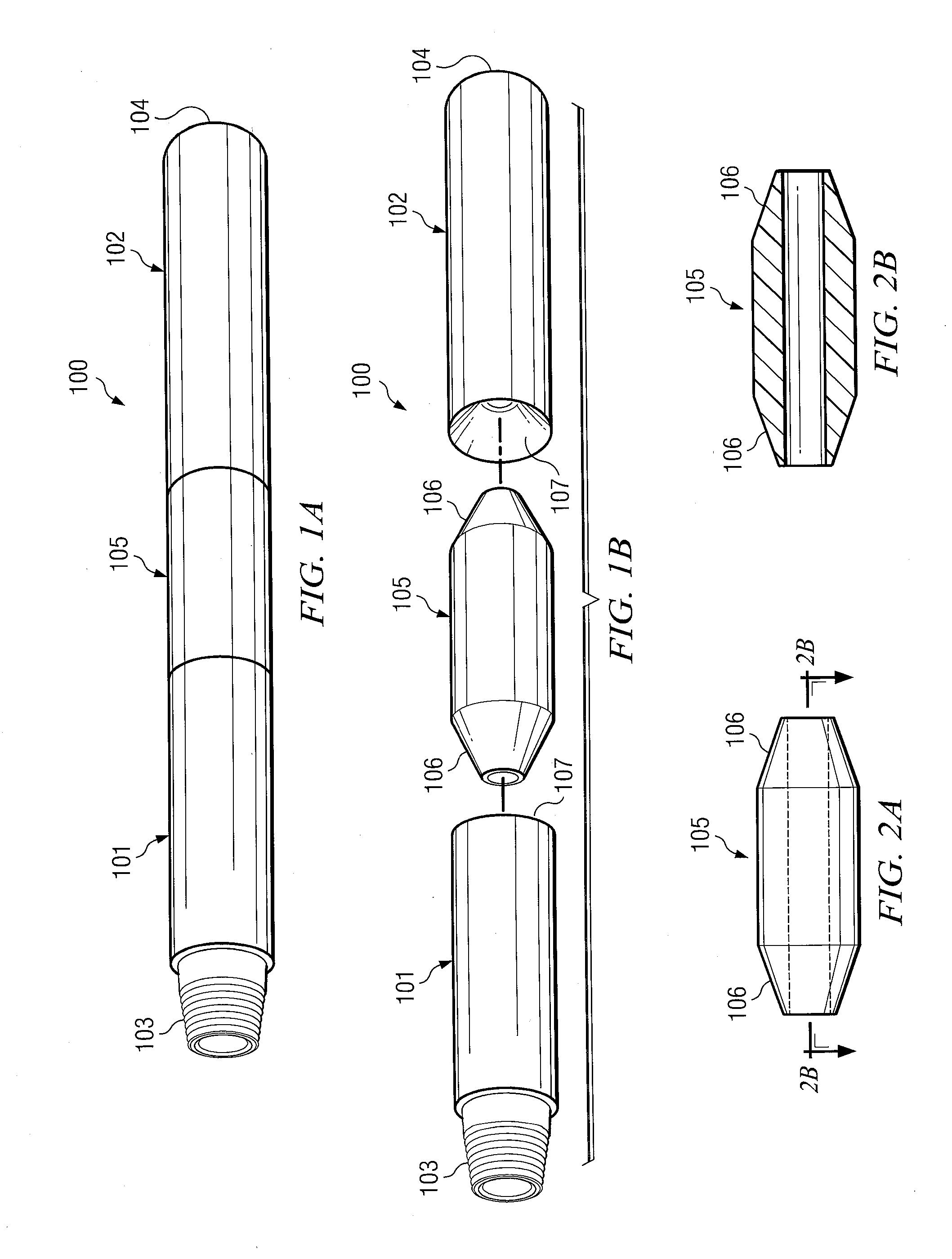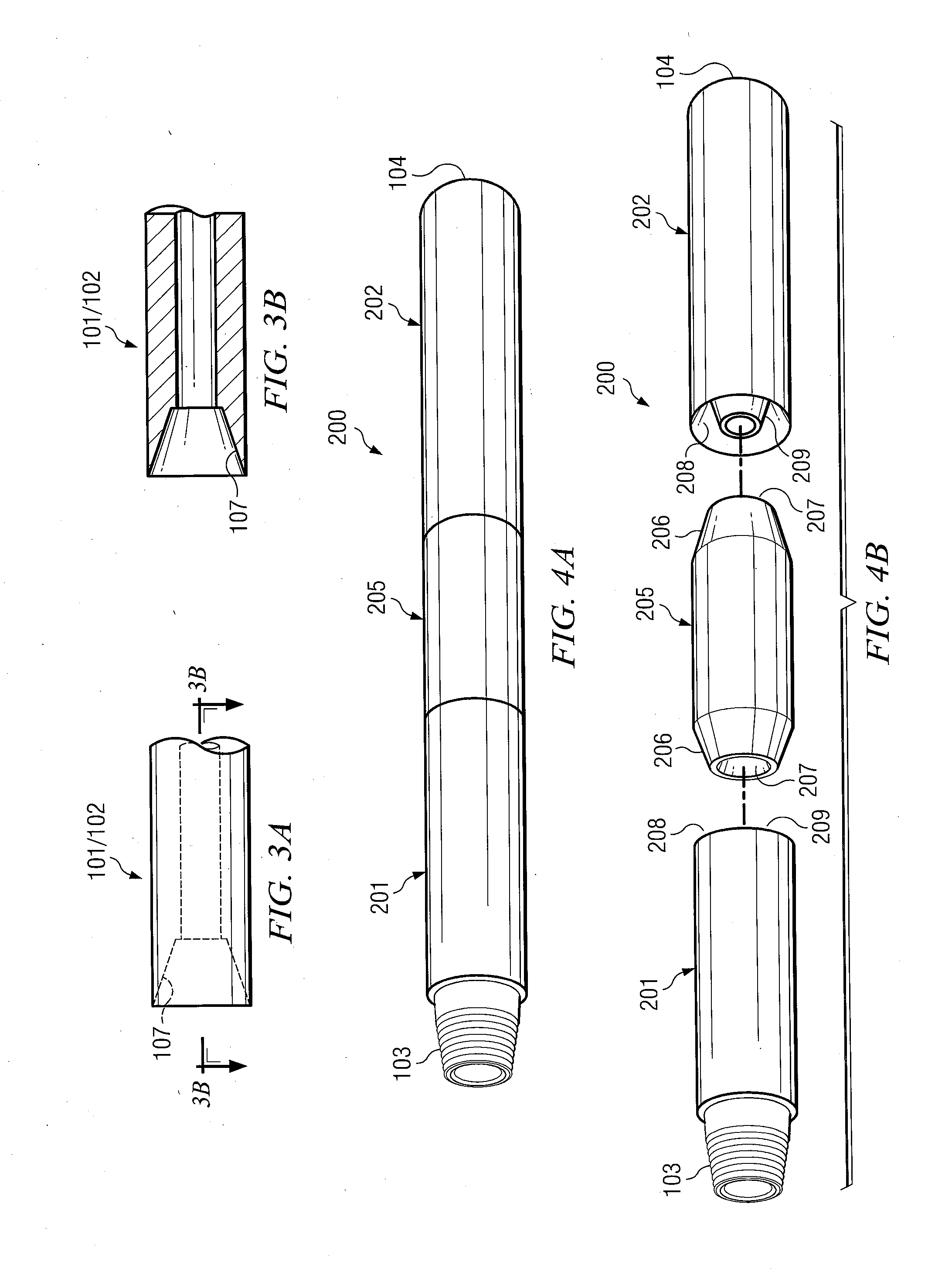Composite isolation joint for gap sub or internal gap
- Summary
- Abstract
- Description
- Claims
- Application Information
AI Technical Summary
Benefits of technology
Problems solved by technology
Method used
Image
Examples
Embodiment Construction
[0034]FIGS. 1A and 1B illustrate, in assembled and disassembled form respectively, perspective views of one embodiment of a composite isolation joint gap sub 100. In FIG. 1A, gap sub 100 comprises pin end portion 101 and box end portion 102 separated by composite portion 105. The pin end portion 101 and box end portion 102 are made from a conductive material, which may advantageously further be a non-magnetic material such as stainless steel (although the inventive material disclosed herein is not limited in this regard). The composite portion 105 is made from a non-conductive composite material, such as a glass-fiber reinforced plastic. Composite portion 105 may also be made from, for example, a proprietary composite available from Advanced Composite Products & Technology, Inc. of Huntingdon Beach, Calif., identifiable as “DWG 3995 REV A”. It will be nonetheless appreciated that the inventive material in this disclosure is not limited in any way to use of this specific composite.
[0...
PUM
 Login to View More
Login to View More Abstract
Description
Claims
Application Information
 Login to View More
Login to View More - R&D
- Intellectual Property
- Life Sciences
- Materials
- Tech Scout
- Unparalleled Data Quality
- Higher Quality Content
- 60% Fewer Hallucinations
Browse by: Latest US Patents, China's latest patents, Technical Efficacy Thesaurus, Application Domain, Technology Topic, Popular Technical Reports.
© 2025 PatSnap. All rights reserved.Legal|Privacy policy|Modern Slavery Act Transparency Statement|Sitemap|About US| Contact US: help@patsnap.com



